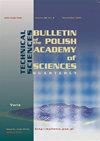物理引导神经网络(pgnn)求解空间分析微分方程
IF 1.1
4区 工程技术
Q3 ENGINEERING, MULTIDISCIPLINARY
Bulletin of the Polish Academy of Sciences-Technical Sciences
Pub Date : 2023-11-06
DOI:10.24425/bpasts.2021.139391
引用次数: 0
摘要
本文章由计算机程序翻译,如有差异,请以英文原文为准。
Physics-guided neural networks (PGNNs) to solve differential equations for spatial analysis
Numerous examples of physically unjustified neural networks, despite satisfactory performance, generate contradictions with logic and lead to many inaccuracies in the final applications. One of the methods to justify the typical black-box model already at the training stage involves extending its cost function by a relationship directly inspired by the physical formula. This publication explains the concept of physicsguided neural network (PGNN), makes an overview of already proposed solutions in the field and describes possibilities of implementing physics-based loss functions for spatial analysis. Our approach shows that the model predictions are not only optimal but also scientifically consistent with domain specific equations. Furthermore, we present two applications of PGNNs and illustrate their advantages in theory by solving Poisson’s and Burger’s partial differential equations. The proposed formulas describe various real-world processes and have numerous applications in the area of applied mathematics. Eventually, the usage of scientific knowledge contained in the tailored cost functions shows that our methods guarantee physics-consistent results as well as better generalizability of the model compared to classical, artificial neural networks.
求助全文
通过发布文献求助,成功后即可免费获取论文全文。
去求助
来源期刊
CiteScore
2.80
自引率
16.70%
发文量
0
审稿时长
6-12 weeks
期刊介绍:
The Bulletin of the Polish Academy of Sciences: Technical Sciences is published bimonthly by the Division IV Engineering Sciences of the Polish Academy of Sciences, since the beginning of the existence of the PAS in 1952. The journal is peer‐reviewed and is published both in printed and electronic form. It is established for the publication of original high quality papers from multidisciplinary Engineering sciences with the following topics preferred:
Artificial and Computational Intelligence,
Biomedical Engineering and Biotechnology,
Civil Engineering,
Control, Informatics and Robotics,
Electronics, Telecommunication and Optoelectronics,
Mechanical and Aeronautical Engineering, Thermodynamics,
Material Science and Nanotechnology,
Power Systems and Power Electronics.

 求助内容:
求助内容: 应助结果提醒方式:
应助结果提醒方式:


